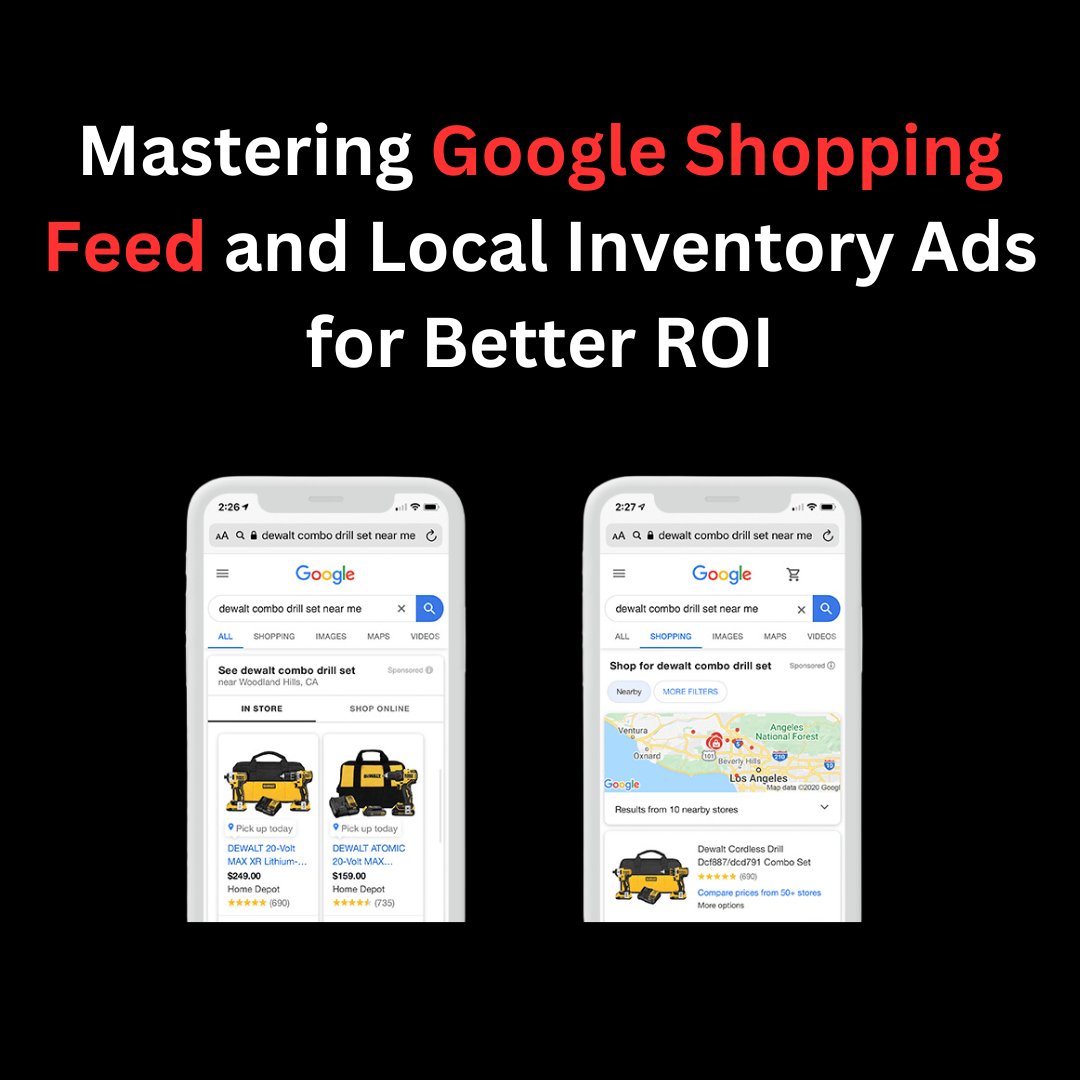
Introduction:
Google Shopping has transformed the way eCommerce businesses reach their customers. By optimizing your Google Shopping Center, you can ensure better visibility, higher conversions, and a stronger return on investment (ROI). Managing a Google Shopping feed effectively requires a strategic approach to product data, while local inventory ads help businesses drive foot traffic and increase sales in physical stores. Understanding how to enhance your Google product feed and leverage meta local inventory ads will position your business for success in an increasingly competitive digital marketplace.
Understanding Google Shopping Center
Google Shopping Center is the hub where merchants manage their product listings for Google Shopping. It allows retailers to showcase their products in search results, making it easier for potential customers to discover and purchase items. A well-structured Google Shopping Center account ensures accurate data transmission to Google, leading to improved performance in Shopping Ads. By keeping your data accurate and structured properly, you can enhance your product visibility and drive more sales.
Optimizing Your Google Shopping Feed
A Google Shopping feed is the foundation of a successful campaign. It contains essential product data such as titles, descriptions, prices, images, and availability. Ensuring that your feed is properly optimized allows your ads to appear in relevant searches. High-quality images, keyword-rich product titles, and clear descriptions improve the chances of attracting potential buyers. The more refined your Google Shopping feed, the better your chances of achieving a higher ROI on your ad spend.
Importance of Google Product Feed Management
Google product feed plays a crucial role in determining the success of your Google Shopping Ads. A properly structured feed ensures that your products appear for the right searches. Missing or inaccurate data can lead to disapprovals, resulting in lost sales opportunities. Regularly updating your feed with correct pricing, availability, and high-quality product information can significantly enhance your campaign’s effectiveness. Investing time in Google product feed management is essential for maximizing ad performance and overall profitability.
Leveraging Local Inventory Ads for Maximum Impact
Local inventory ads are designed to promote products available in physical stores. They help businesses attract nearby shoppers who are looking for specific products. These ads provide details such as store location, availability, and pricing, making it easy for customers to visit and purchase. By integrating local inventory ads into your marketing strategy, you can increase foot traffic, enhance brand credibility, and improve overall sales performance. The key to success with local inventory ads is keeping product data up-to-date to ensure accuracy in search results.
Enhancing Performance with Meta Local Inventory Ads
Meta local inventory ads serve as an advanced approach to targeting local shoppers. These ads display product availability across various platforms, helping businesses reach a broader audience. Implementing meta local inventory ads ensures that your products appear in relevant searches across Google’s network, increasing the chances of conversions. Businesses that utilize these ads effectively experience higher engagement rates and improved sales in physical stores.
Maintaining an Updated Feed for Google Shopping
Keeping your feed Google Shopping updated is critical to maintaining ad performance. Regular audits ensure that product details remain accurate and competitive. Frequent updates to pricing, stock levels, and product attributes help prevent disapprovals and ensure a seamless shopping experience for customers. Automated feed management tools can simplify this process, making it easier to maintain an optimized feed Google Shopping strategy.
Key Strategies for Boosting ROI
Achieving a better ROI on Google Shopping requires a combination of optimization techniques. First, ensuring that your Google Shopping feed is fully optimized with high-quality images and well-crafted product descriptions is essential. Next, managing your Google product feed efficiently can help you avoid common errors that negatively impact ad performance. Utilizing local inventory ads allows you to tap into local demand, while meta local inventory ads provide an additional layer of visibility. Finally, keeping your Google Shopping feed updated ensures that your ads continue to perform well over time.
Conclusion
A well-structured Google Shopping Center strategy, combined with an optimized Google Shopping feed and effective use of local inventory ads, can significantly improve your online and offline sales. By maintaining accurate product data and leveraging meta local inventory ads, businesses can enhance their digital presence and drive higher ROI. Investing in continuous feed optimization and monitoring ensures that your Google Shopping campaigns remain competitive and profitable. For businesses looking to maximize their Google Shopping success, adopting these best practices will lead to sustained growth and increased conversions.





Leave a Reply